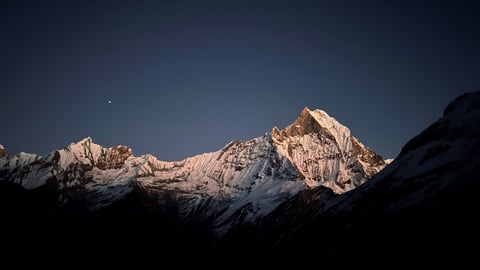Everything you need to know about ABC trek
Annapurna Base Camp Trek (4,130 M)
8/21/20245 min read
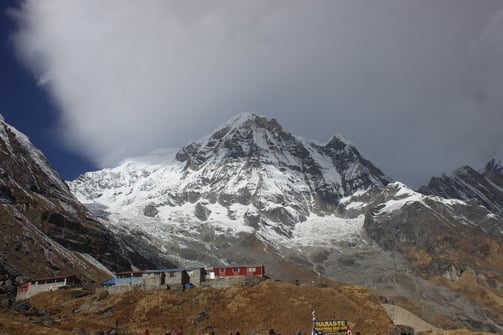

Annapurna Base Camp or ABC Trek is one of Nepal's most famous and beautiful trekking trails. It's also prevalent in the trekking community around the globe.
Table of Content
Why ABC?
How to reach?
Itinerary
Permits
Guide
Porter
Accommodation
Food
What to carry
Mobile Network & WiFi
Currency Exchange
Challenges
Preparation or exercise
Why ABC?
The majestic Annapurna massif includes the world's tenth-highest peak, Annapurna I (8,091 M). The gigantic view of the Annapurna range and Machhapuchhre (Fishtail Mountain, 6,993 M) is breathtaking. There are very few treks where we can see the 8,000 M peak so closely. The trail goes through the remote villages of Nepal where we can witness the beauty of rural Nepal culture, lifestyles, Nepalese food, and people.
How to reach?
There are so many ways to reach Pokhara which is the closest big city for the ABC trek. Pokhara has both International and domestic airports. Many flights connect everyday Pokhara with Kathmandu ( the capital of Nepal).
Itinerary
we took the shortest route to complete the trek. we had done the entire trek in just 6 days. So people who have a time constraint can follow this itinerary.
Day 0: Reach Pokhara
Day 1: Take a shared or reserved car from Pokhara to Jinhu Danda and then trek to Chhomrong or Lower Sinuwa ( 3 KM), elevation 2,220 m
Day 2: Chhomrong or Lower Sinuwa to Himalaya (13 KM), elevation 2,900 m
Day 3: Himalaya to ABC (Annapurna Base Camp) via MBC( Machhapuchhre Base Camp) (10 KM), elevation 4,130 m
Day 4: ABC to Bamboo (15 KM), elevation 2,310 m
Day 5: Bamboo to Jinhu ( 10 KM), elevation 1,780 m
Day 6: Jinhu to Pokhara by Car
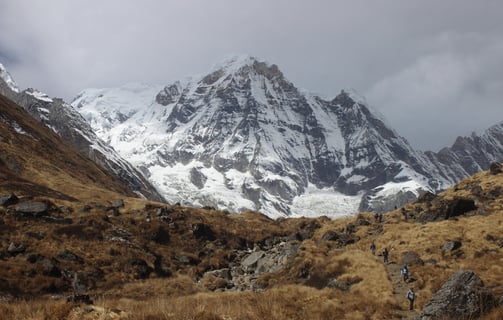

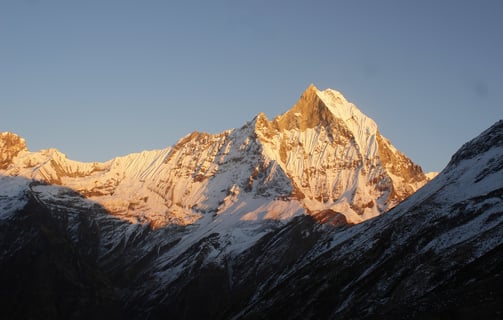

Trekkers are descending back from ABC
Mt. Fishtail during sunset
Permits
For ABC Trek it is mandatory to have two permits. Trekking Information Management System(TIMS) & Annapurna Conservation Area Permit(ACAP). You can avail of the permits yourself from the Nepal Tourism Board office in Pokhara or Kathmandu or you can ask your guide to arrange the same for you. Documents required for these permits are a photocopy of your Passport and passport size photograph and the details of your trekking itinerary along with the date of entry and exit. The cost of TIMS permit is 1,000 NPR for group trekkers and the cost of ACAP permit is 3,000 NPR per person.
Guide
As we know Nepal is the heaven for the trekking community. So to find a guide is not a hard job. You can find guides in Kathmandu or Pokhara or you can ask the reception of the hotel or hostel where you stay in Pokhara. They can give you the contact details of some experienced guides. Generally, the fee of a guide for the ABC trek is between 3,000 NPR to 4,000 NPR per day. I am sharing some guide's contact details which may be helpful for you to plan the trek, Lakpa Sherpa +977 9807727001, Jayram Dahal +977 9817077676.
Porter
For those who want to offload their bag for the trek, they can hire a porter for them. You can ask the guide for a porter so that they can arrange that for you. You can easily hire a porter in Pokhara or the starting point of the trail or in some cases the porter comes along with the guide you hire. the porters generally carry 20-25 kg of weight and they change from 2,000 NPR to 3,000 NPR per day. At the end of your successful trek, the porter expects some extra tips from the group.
Accommodation
For accommodation, tea houses or homestays are there throughout the trail. Where you can find good options of stay and food also. Most of the tea houses offer shared rooms or dorm-style accommodation systems. Generally per bed per night costs from 150 NPR to 300 NPR. As the altitude of the trek increases the cost per bed per night increases as well. You can pre-book your stay at those tea houses or you can do a spot booking also but the best way to book your accommodation would be you ask your guide to arrange the booking because they have a connection with the tea house owners. So they can do the task easily.
Food
From Pizza to Biriyani, from pancakes to Chinese food you ask it they have it. But the best food which you could have is Nepali Dal-Bhat. It is a well-balanced food and you can ask for refill also. As they say " Dal-Bhat powers, 24 hours". The cost of every meal varies from 500 NPR to 800 NPR. The cost of every meal increases when the altitude increases which is obvious.
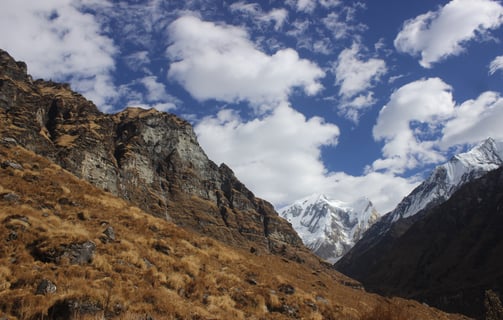


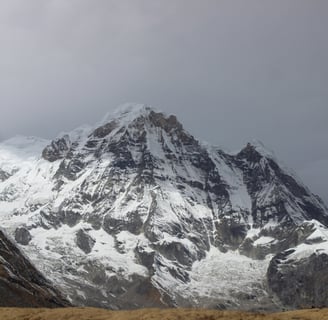
What to Carry
Essentials
Trekking Shoes
Backpack
T-shirts- 3 pcs
Inner Thermals-1 pair
Fleece layers-1 pcs
Light Sweater-1 pcs
Padded Jacket-1pcs
Trek Pants-2 pcs
Sunglass
Suncap
Hand Gloves
Woolen Cap
Balaclava
Socks- 4 pair
Trekking Poles
Head Lamp
Rain Ware
Cover for backpack
Day pack(20 Ltr.) Optional
Toilet Kit
Plastic covers
Undergarments
Medical Kit
Diamox
Dexamethasone
Nifedipine
Dolo 650
Avomine
Combiflam
Digene
ORS
Knee Brace
You personal medicines
Mobile network & WiFi
The trek has patchy mobile network coverage from Ncell and NTC (Nepal Telco), the two main telecommunication networks in the region. Most villages and hiking trails have coverage, but some areas may have poor or no service. However, tea houses offer good-speed WiFi connections at 150 NPR to 300 NPR per day.
Currency Exchange
Both in Kathmandu and Pokhara there are plenty of currency exchange places. It would not be a problem at all.
Challenges
Annapurna Base Camp Trek is a very commercialized trek and very popular all around the globe. There are no big challenges that you will face on the trail. But the most challenging part will be the stairs. 80% of the trail is stairs. so it will test your lungs and legs.
How to prepare for the Trek
As the trek has a lot of stairs, almost 70%-80%, you have to train your lungs and legs very well. Legs workout twice a week would be great and for cardio, running would be the best option. You can target 10 km in 1 hour. Cycling would be another good option. You can target 25 km in 1 hour.
Wish you all the best and see you on the trails !!
